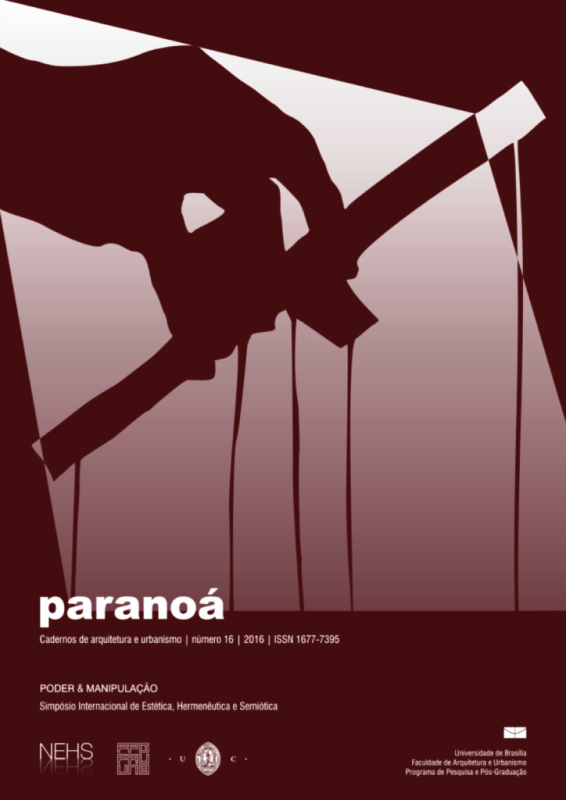Architecture, modern empty and social space
DOI:
https://doi.org/10.18830/issn.1679-0944.n16.2016.04Keywords:
Modern architecture, Void, Social recognition, Hermeneutics, Design projectAbstract
Modern Movement’s vanguard promulgated free circulation and space within the nineteenth century urban fabric. Moderns believed in urban space built in conjunction with green areas, esplanades and areas for free movement would set a new urban and social order open to collective life. The Glassarchitektur characterized by few elements, slender structures and transparent walls, so called "reductionist modernist tradition" by Kenneth Frampton. This tectonic of minimum materiality became one of the aesthetic goals of early twentieth century modern architecture. Critics denounced modernism because the overly abstract spaces where there is no place for empirical event, for ornament or to the social fact leading to an impoverishment of cultural environment and 'emptying' the public sphere. How can one recognize the struggle for identity in designed and built urban space? How culturally recognize the modern or modernist without giving up collective memories and tradition? This paper aims to understand modernist void as spaces of experience, both as a urban phenomenon in continuous configuration and as a historical fact. We assume that social space is not an ideal or totalizing representations as modernists tenets preached. In a hermeneutical analysis of the void, the interpretation of memories and promises constinuously struggle for recognition in everyday life breaking with the idea of modern architecture as object, completed in its project design and construction.
Downloads
Downloads
Published
How to Cite
Issue
Section
License
Autores que publicam nesta revista concordam com os seguintes termos:
- Autores mantém os direitos autorais e concedem à revista o direito de primeira publicação, com o trabalho simultaneamente licenciado sob a Licença Creative Commons Attribution que permite o compartilhamento do trabalho com reconhecimento da autoria e publicação inicial nesta revista. http://creativecommons.org/licenses/by/4.0
- Autores têm autorização para assumir contratos adicionais separadamente, para distribuição não-exclusiva da versão do trabalho publicada nesta revista (ex.: publicar em repositório institucional ou como capítulo de livro), com reconhecimento de autoria e publicação inicial nesta revista.
- Autores têm permissão e são estimulados a publicar e distribuir seu trabalho online (ex.: em repositórios institucionais ou na sua página pessoal) a qualquer ponto antes ou durante o processo editorial, já que isso pode gerar alterações produtivas, bem como aumentar o impacto e a citação do trabalho publicado (Veja O Efeito do Acesso Livre).















